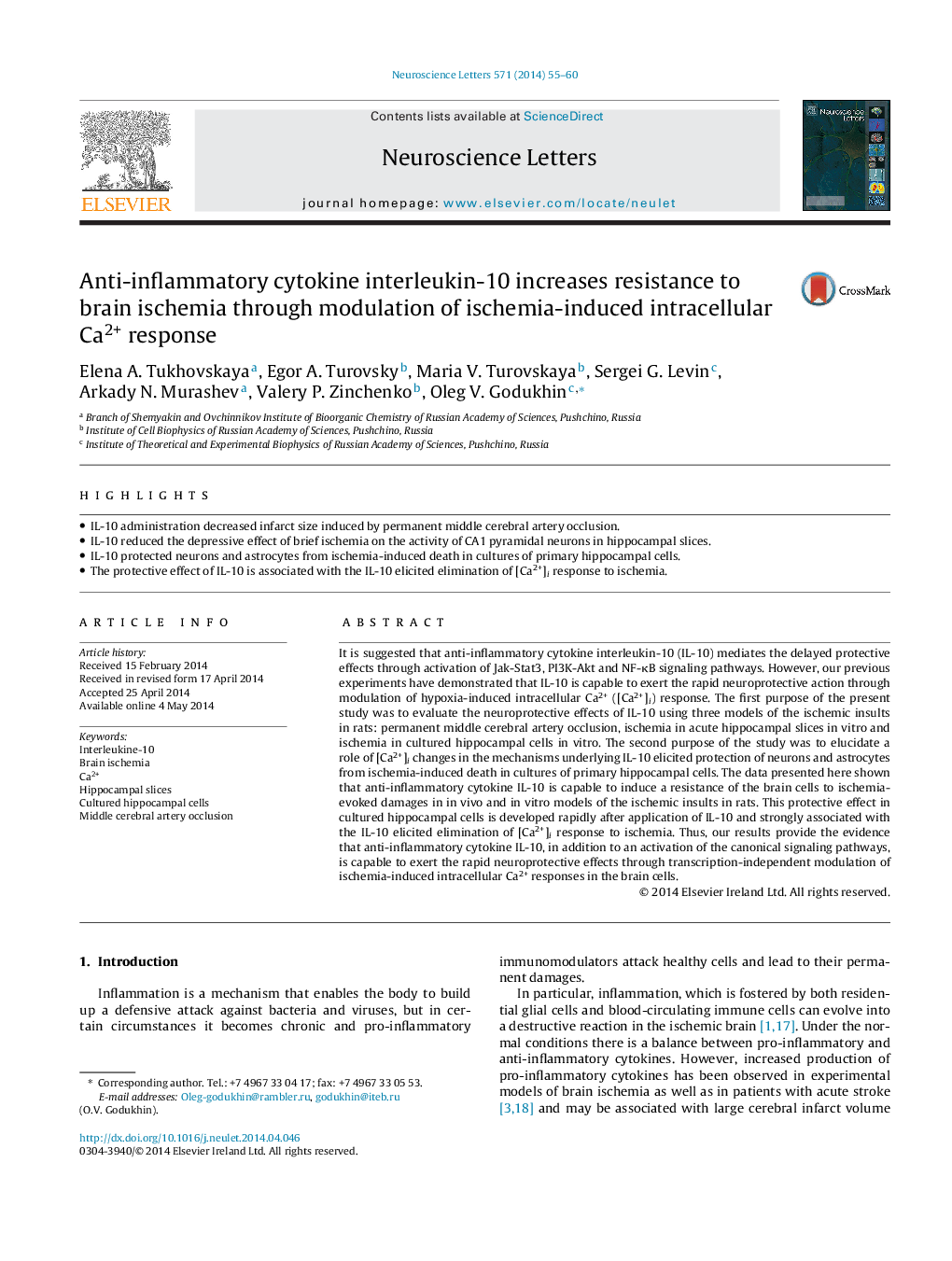| Article ID | Journal | Published Year | Pages | File Type |
|---|---|---|---|---|
| 6281808 | Neuroscience Letters | 2014 | 6 Pages |
Abstract
It is suggested that anti-inflammatory cytokine interleukin-10 (IL-10) mediates the delayed protective effects through activation of Jak-Stat3, PI3K-Akt and NF-κB signaling pathways. However, our previous experiments have demonstrated that IL-10 is capable to exert the rapid neuroprotective action through modulation of hypoxia-induced intracellular Ca2+ ([Ca2+]i) response. The first purpose of the present study was to evaluate the neuroprotective effects of IL-10 using three models of the ischemic insults in rats: permanent middle cerebral artery occlusion, ischemia in acute hippocampal slices in vitro and ischemia in cultured hippocampal cells in vitro. The second purpose of the study was to elucidate a role of [Ca2+]i changes in the mechanisms underlying IL-10 elicited protection of neurons and astrocytes from ischemia-induced death in cultures of primary hippocampal cells. The data presented here shown that anti-inflammatory cytokine IL-10 is capable to induce a resistance of the brain cells to ischemia-evoked damages in in vivo and in vitro models of the ischemic insults in rats. This protective effect in cultured hippocampal cells is developed rapidly after application of IL-10 and strongly associated with the IL-10 elicited elimination of [Ca2+]i response to ischemia. Thus, our results provide the evidence that anti-inflammatory cytokine IL-10, in addition to an activation of the canonical signaling pathways, is capable to exert the rapid neuroprotective effects through transcription-independent modulation of ischemia-induced intracellular Ca2+ responses in the brain cells.
Related Topics
Life Sciences
Neuroscience
Neuroscience (General)
Authors
Elena A. Tukhovskaya, Egor A. Turovsky, Maria V. Turovskaya, Sergei G. Levin, Arkady N. Murashev, Valery P. Zinchenko, Oleg V. Godukhin,
